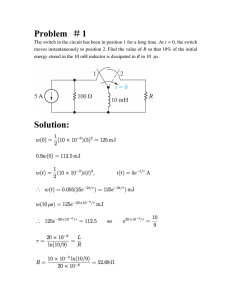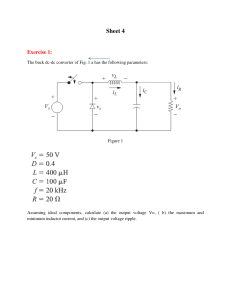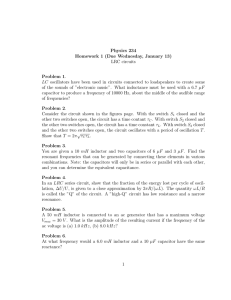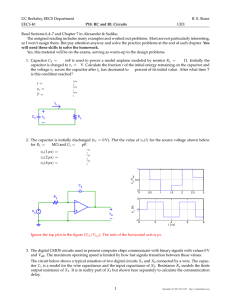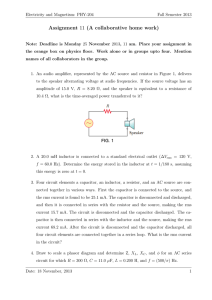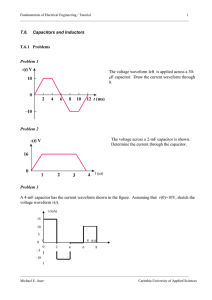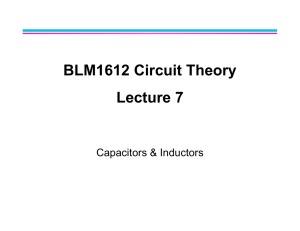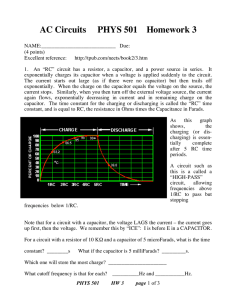Quiz 11
advertisement
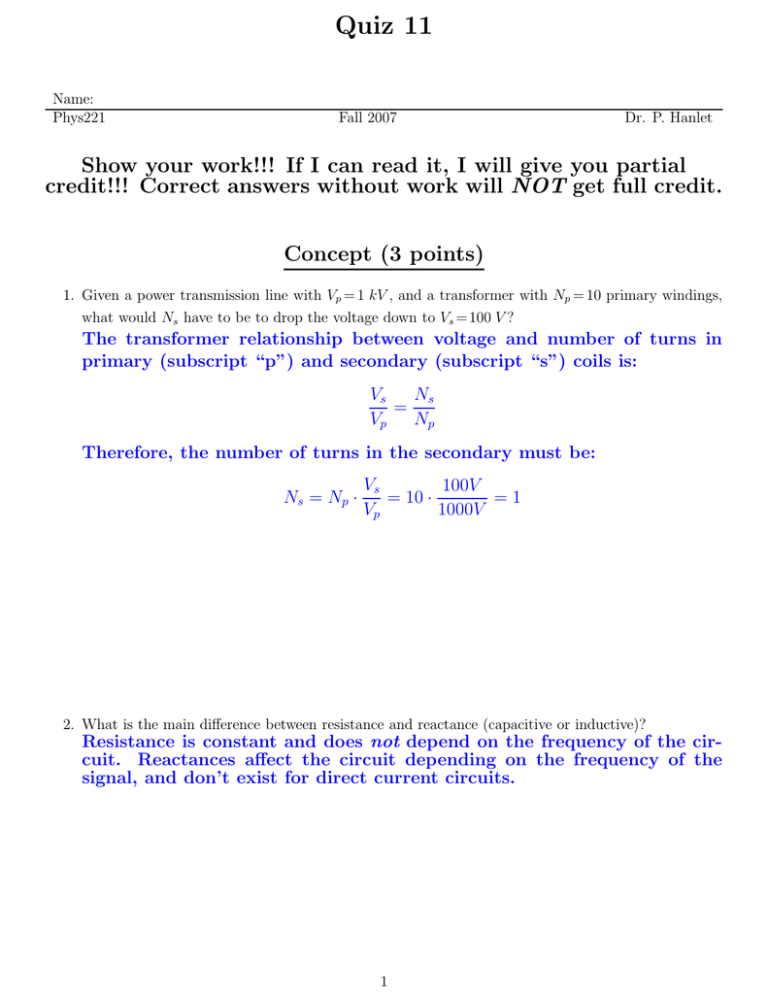
Quiz 11 Name: Phys221 Fall 2007 Dr. P. Hanlet Show your work!!! If I can read it, I will give you partial credit!!! Correct answers without work will NOT get full credit. Concept (3 points) 1. Given a power transmission line with Vp = 1 kV , and a transformer with Np = 10 primary windings, what would Ns have to be to drop the voltage down to Vs = 100 V ? The transformer relationship between voltage and number of turns in primary (subscript “p”) and secondary (subscript “s”) coils is: Vs Ns = Vp Np Therefore, the number of turns in the secondary must be: Ns = N p · Vs 100V = 10 · =1 Vp 1000V 2. What is the main difference between resistance and reactance (capacitive or inductive)? Resistance is constant and does not depend on the frequency of the circuit. Reactances affect the circuit depending on the frequency of the signal, and don’t exist for direct current circuits. 1 Problem (6 points) 3. An oscillating LC circuit consisting of a C = 1 nF capacitor and a L = 3 mH inductor has a maximum voltage of Vm = 3V . What are (a) the maximum charge on the capacitor? The maximum charge on the capacitor occurs when the voltage is maximum in the capacitor; i.e. when the current is zero in the inductor. So: C= Q Vm −→ Q = CVm = (1.0 × 10−9 F )(3.0 V ) such that: Q = 3.0 × 10−9 C (b) the maximum current through the inductor? From: 11 2 1 Q = UE UB = LI 2 = 2 2C one can solve for I: 2 12 (3.0 × 10−9 C Q Q I= =p =√ LC LC (3.0 × 10−6 H)(1.0 × 10−9 C) such that: I = 1.7 × 10−3 A = 1.7 mA (c) the maximum energy stored in the magnetic field? The maximum energy stored in the magnetic field is when the current is maximum in the inductor and charge is zero on the capacitor. So: such that: 1 1 UB = LI 2 = (3.0 × 10−6 H)(1.7 × 10−3 A)2 2 2 such that: UB = 4.5 × 10−9 J 2



